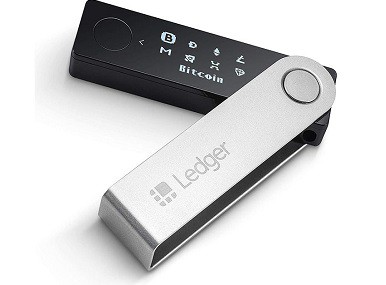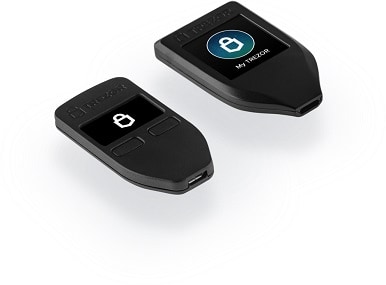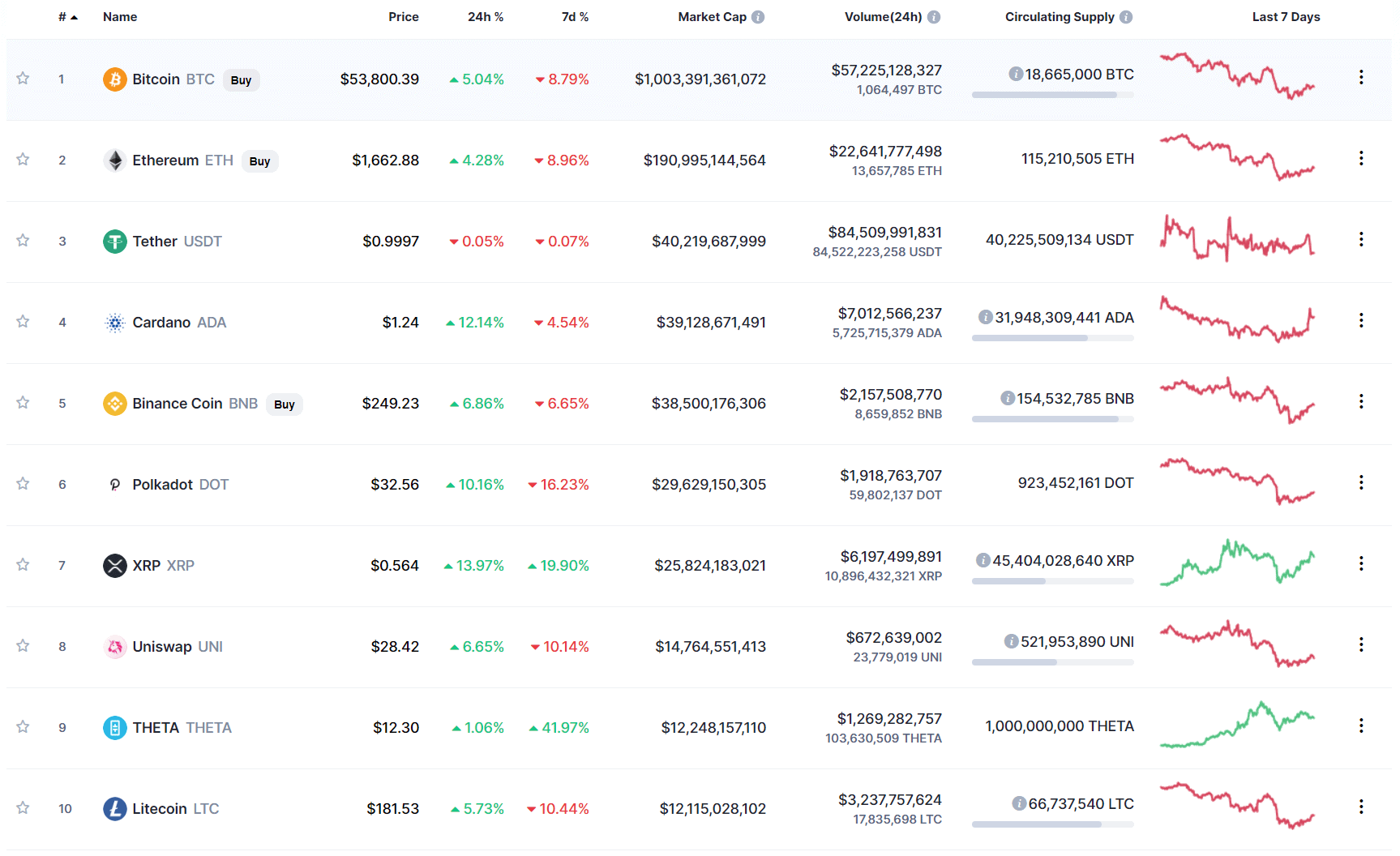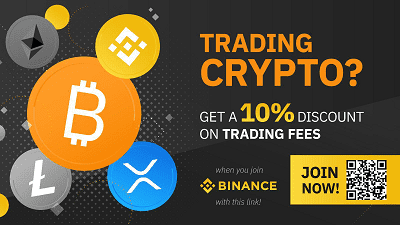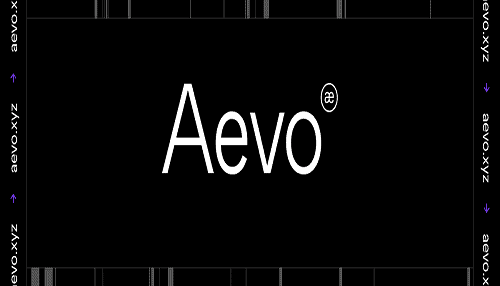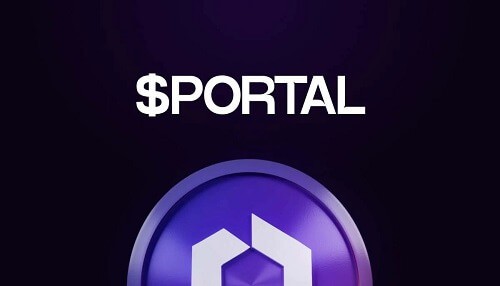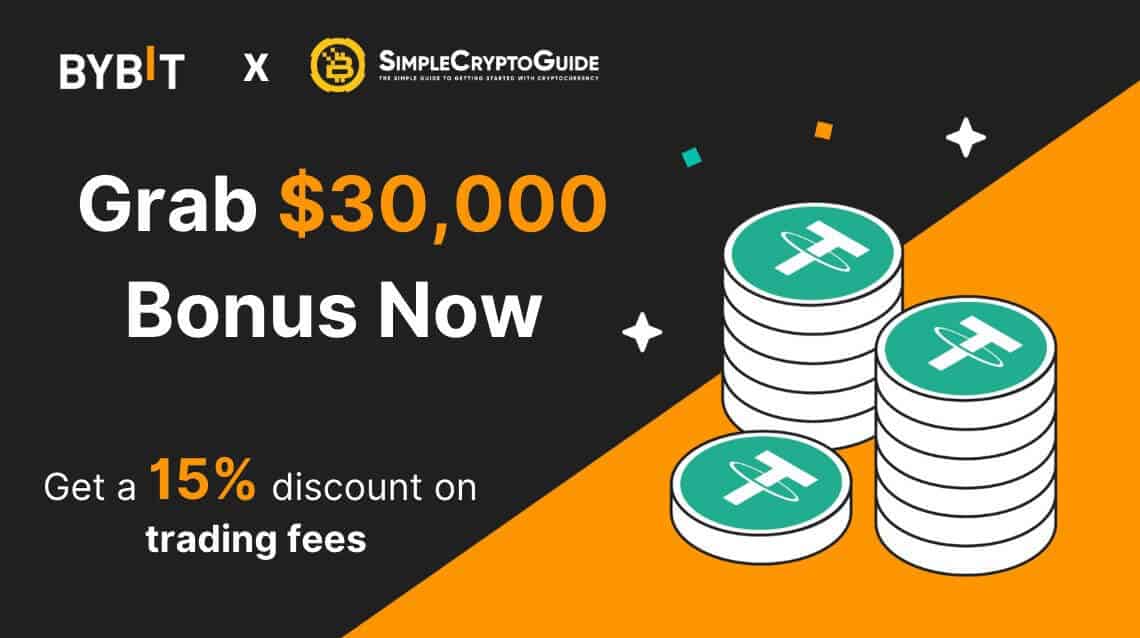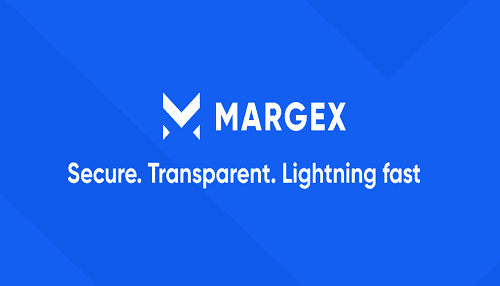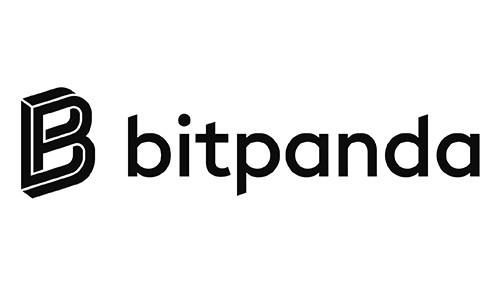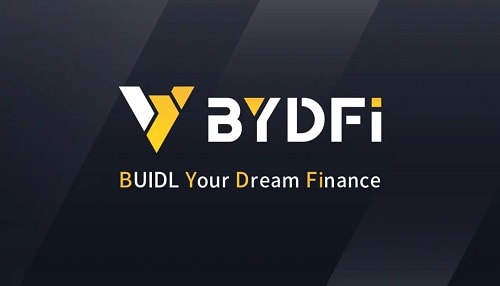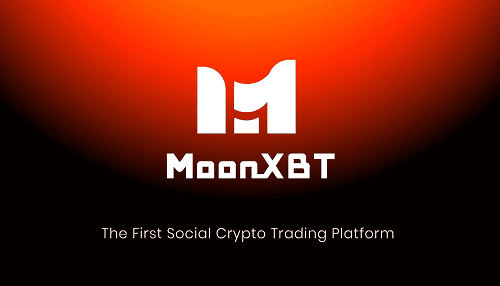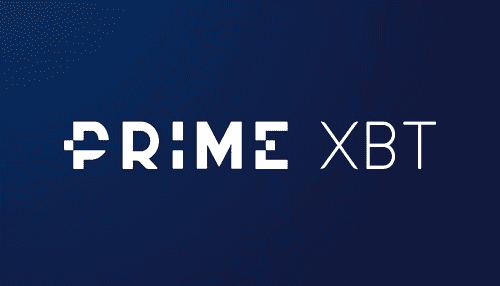How To Buy Polkadot (DOT)?

A common question you often see on social media from crypto beginners is “Where can I buy Polkadot?” Well, you’ll be happy to hear it is actually quite a simple and straightforward process. Thanks to its massive popularity, you can now buy Polkadot on most cryptocurrency exchanges, including Coinbase and Binance in 3 simple steps.
Step 1: Create an account on an exchange that supports Polkadot (DOT)
First, you will need to open an account on a cryptocurrency exchange that supports Polkadot (DOT).
We recommend the following based on functionality, reputation, security, support and fees:
1
Bybit
Fees (Maker/Taker) 0.1%*-0.1%*
Cryptocurrencies
Available for Trade 400+
Sign-up bonus
15% reduced trading fees & up to $30,000 sign-up bonus*
Available in
Europe, Asia, Oceania, Africa
2
Binance
Fees (Maker/Taker) 0.075%*-0.1%*
Cryptocurrencies
Available for Trade 500+
Sign-up bonus
10% reduced trading fees*
Available in
Europe, Asia, Oceania, Africa
In order to sign up, you will need to enter some basic information, such as your email address, password, full name and, in some cases, you might also be asked for a phone number or address.
Note: On specific exchanges, you might need to complete a Know Your Customer (KYC) procedure in order to be able to purchase cryptocurrency. This is most commonly the case with licensed and regulated exchanges.
Step 2: Deposit funds into your account
Many cryptocurrency exchanges will allow you to purchase Polkadot (DOT) with fiat currencies, such as EUR, USD, AUD and others. Furthermore, they will also provide you with multiple deposit methods through which you can fund your fiat account, such as credit and debit cards, ewallets or direct bank transfers.
Note: Some payment methods will have higher fees than others, such as credit card payments. Before funding your fiat account on your chosen exchange, make sure to do your due diligence to find out the fees involved with each payment method to avoid unnecessary costs.
Step 3: Buy Polkadot (DOT)
This process is similar across almost every cryptocurrency exchange. All you have to do is find a navigation bar or a search bar, and search for Polkadot (DOT) or Polkadot (DOT) trading pairs. Look for the section that will allow you to buy Polkadot (DOT), and enter the amount of the cryptocurrency that you want to spend for Polkadot (DOT) or the amount of fiat currency that you want to spend towards buying Polkadot (DOT). The exchange will then calculate the equivalent amount of Polkadot (DOT) based on the current market rate.
Note: Make sure to always double-check your transaction details, such as the amount of Polkadot (DOT) you will be buying as well as the total cost of the purchase before you end up confirming the transaction. Furthermore, many cryptocurrency exchanges will offer you their own proprietary software wallet where you will be storing your cryptocurrencies; however, you can create your own individual software wallet, or purchase a hardware wallet for the highest level of protection.
For more in-depth instructions, our ‘Absolute Beginner’s Guide To Cryptocurrency Investing‘ will take you through the process step-by step. In addition to providing instructions for sending and receiving your cryptocurrency.
And if you’re completely new to crypto our beginner, intermediate and advanced level articles will get you up to speed with everything you need to know about the cryptocurrency space starting out.
What is Polkadot (DOT)?
Polkadot asserts that it is the subsequent stage in the development of blockchain technology, and describes itself as an open-source protocol that was developed for everyone. Dr. Gavin Wood, one of the co-founders of Ethereum, was the first person to conceptualize the idea. The group has decided that improving their security, scalability, and innovation should be their top priorities. In order to accomplish this goal, the necessary infrastructure must be developed. This infrastructure must not only support the development of new ideas and concepts, but it must also ensure that appropriate interoperability can be attained.
A parachain, also known as a parallel blockchain, is the name given to an individual blockchain that is part of the Polkadot ecosystem. The main chain is referred to as the Relay Chain. The goal is to make it simple for information to be passed back and forth between parachains and the Relay Chain at any time. One way to think about parachains is as being analogous to the individual shards that will be implemented in the planned version of ETH 2.0.
Through the use of the framework Substrate, which is designed for the creation of cryptocurrencies and other decentralized systems, any developer, company, or individual can set up their own bespoke parachain. When the custom chain is first connected to the Polkadot network, it will not be interoperable with any of the other parachains on the network. However, once it is connected, it will become interoperable.
With this design, constructing cross-chain applications, products, and services ought to become a lot less complicated. Transfers of either data or assets between different blockchains have not been possible on a large scale in the past.
Network validators are responsible for securing and validating the data that is spread across all of these different parachains. Only a small number of these network validators are required to secure multiple parachains. In addition, these validators will make certain that transactions can be distributed across multiple parachains in order to improve scalability.
When did Polkadot launch?
On May 26, 2020, the Genesis block of the Polkadot network was launched as a Proof of Authority (PoA) network. The governance of the network is controlled by a single Sudo account, which is known as the super-user. During this time period, validators began to join the network and signal their intention to take part in the consensus process.
On June 18, 2020, the network underwent a transition and began operating as a Proof of Stake (PoS) network. On July 20, 2020, the Sudo module was removed because the chain was successfully secured by the decentralized community of validators. This marked the beginning of the transition of the governance of the chain into the hands of the holders of the tokens (DOT). This marks the beginning of Polkadot’s transition toward a decentralized structure.
The enabling of transfer functionality was the last step in the transition to a fully functional Polkadot, and it took place on Polkadot at block number 1,205,128 on August 18, 2020 at 16:39 UTC. This marked the completion of the transition.
Redenominating DOT took place on the 21st of August in the year 2020. As of today, one DOT (old) is equivalent to one hundred new DOT.
The benefits of Polkadot
There are many different motivations that may drive developers to investigate the Polkadot ecosystem. Because of the inherent constraints of existing blockchains, it is abundantly clear that a number of fundamental problems need to be solved, including scalability, customization, interoperability, governance, and upgradeability.
Polkadot satisfies many requirements in terms of its ability to scale. It functions as a multichain network, which gives it the capability to process transfers in parallel across a variety of individual chains. This eliminates one of the most significant obstacles that currently exists in relation to blockchain technology. Processing in parallel is a significant improvement that has the potential to pave the way for wider global adoption of blockchain technology.
Polkadot offers a variety of other features, some of which can be utilized by users interested in customization. There is not yet “one blockchain infrastructure to rule them all” as of this moment in time. Polkadot makes it possible for each individual chain to have its design optimized for the specific functionality of the project by recognizing that every project has its own unique needs and requirements. Using Substrate, developers are able to efficiently modify the individual chains of their applications so that they meet the requirements of the project.
When it comes to interoperability, ensuring that different projects and applications can seamlessly share data is a significant factor. There is a wide variety of potential applications for this technology, although it is not yet clear what kinds of goods and services this will result in. It has the potential to create an entirely new financial ecosystem, in which each individual parachain would be responsible for managing a specific aspect in turn.
Any community that is connected to a particular parachain will have the ability to govern their network in whatever manner they deem appropriate. In addition, the future governance of Polkadot as a whole is dependent on the contributions of all of the communities. The process of collecting feedback from the community can result in insightful discoveries that help projects improve over time.
Additionally, upgrading specific parachains is made very simple with Polkadot’s support. There is no need for hard forks because doing so can cause communities to become fragmented. Instead, the native chain can be upgraded in a way that does not require any friction.
The DOT token explained
Polkadot, as is the case with the vast majority of other blockchain infrastructure projects, has its own native token. It is denoted by the symbol DOT and functions as the network token, just as ETH does the job for Ethereum and BTC does it for Bitcoin. Both of these symbols are abbreviated ETH and BTC.
There are many different applications for this token. To begin, it provides token holders with governance rights over the entire Polkadot platform. These rights allow token holders to vote on important issues. Among these responsibilities are the setting of network fees, voting on overall network upgrades, and the deployment of parachains or their removal.
Staking is another method that DOT is designed to employ in order to facilitate network consensus. All holders of DOT tokens have an incentive to adhere to the network’s rules at all times, just like users of other networks that involve staking. Why is that? If they don’t, then they run the risk of having their stake lost.
The use of DOT as the bonding method is the third alternative. This is a necessary step in the process whenever the Polkadot ecosystem receives new parachains. The bonded DOT will be locked up while the bonding period is in effect. After the bond duration has come to an end and the parachain has been removed from the ecosystem, it is then freed.
Staking and bonding on Polkadot
The approach to interoperability taken by Polkadot goes far beyond the simple trading of data and assets with other platforms. It is also a way to introduce new ideas, such as incentivizing honest token staking and bonding tokens, which are both examples of new ideas that can be introduced this way.
There is nothing novel about the idea of staking tokens on a blockchain network. This consensus model, which is known as Proof of Stake (PoS), encourages users to stake coins on the network by rewarding them for doing so. When playing Polkadot, those who bet honestly are rewarded, while dishonest players risk losing their entire wager.
As was discussed earlier, the process of adding a new parachain involves bonding DOT tokens together. The process of committing tokens to the network for a predetermined amount of time is referred to as bonding. Chains that aren’t useful or projects that aren’t being maintained anymore will be removed, and the bonded tokens associated with them will be returned.
Polkadot has four core components:
- Relay Chain: Polkadot’s “heart,” helping to create consensus, interoperability and shared security across the network of different chains;
- Parachains: independent chains that can have their own tokens and be optimized for specific use cases;
- Parathread: similar to parachains but with flexible connectivity based on an economical pay-as-you-go model;
- Bridges: allows parachains and parathreads to connect and communicate with external blockchains like Ethereum.
Polkadot is a sharded multichain network, which means that it is capable of processing many transactions on several chains simultaneously (also known as “parachains”). The increased scalability is a result of this parallel processing power.
Through the use of the Substrate framework, developing bespoke blockchains is a quick and simple process, and they can be connected to Polkadot’s network in a matter of minutes. The network is also very adaptable and highly flexible, which enables participants to share information and functionality with one another in a manner analogous to how apps on a smartphone function. In order to add new features or fix bugs, Polkadot can be automatically upgraded without the need for a separate branch to be created first.
The network is governed by a user-driven governance system that is extremely sophisticated and contributes to the network’s overall security. Communities using Polkadot can tailor the governance of their blockchain to meet their specific requirements and adapt to changing circumstances. Nominators, validators, collators, and fishermen all perform a variety of tasks to assist in the protection and maintenance of the network as well as the elimination of undesirable behavior.
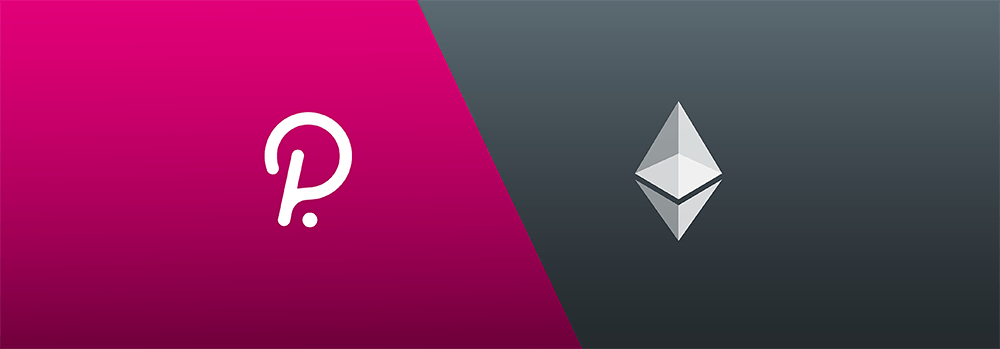
What Makes Polkadot Different From Ethereum?
Polkadot and Ethereum both have notable founders, so there has been a lot of discussion regarding the differences between the two cryptocurrencies.
In point of fact, Polkadot and the forthcoming major update to Ethereum, which is going to be known as Ethereum 2.0, have a great deal in common with regard to the design and operation of both systems.
Both networks maintain a primary blockchain that is used to conclude transactions and enable the creation of a large number of secondary blockchains that make use of the primary blockchain’s resources. Staking, as opposed to mining, is also used by both of these technologies as a method for maintaining network synchronization.
Ongoing research is being conducted to investigate how the networks’ transactions might be made interoperable with one another. For example, the company Parity has developed a technology that is geared toward users who might want to deploy applications that make use of Ethereum’s code and the community behind it, but that would run on Polkadot.
Last but not least, developers have the ability to use Polkadot’s development framework to simulate a copy of the Ethereum blockchain, which can then be incorporated into their very own unique blockchain designs.
What is Kusama’s relationship with Polkadot?
Kusama (KSM) is a platform for testing and development that is used by Polkadot. On this platform, developers are able to experiment with new ideas and projects before putting them online.
Kusama has a lower economic barrier entry than Polkadot does; consequently, launching a parachain or becoming a validator on Kusama is much simpler and requires less staking of DOTs than it does on Polkadot.
The governance parameters are less stringent when using Kusama, which leads to upgrades going more smoothly and more quickly. This is one of the disadvantages of using Kusama. In contrast, Kusama can be up to four times faster than Polkadot in certain situations. Token holders only need seven days to vote on a referendum, followed by an eight-day validation period, and then the referendum will be ratified on the chain after that period of time has passed.
However, this rate of change comes at the expense of stability and security, which means that stakeholders need to remain vigilant in order to keep track of all of the proposals, referendums, and upgrades that are being discussed. Concurrently, Kusama validators are frequently required to update their systems with little to no advanced notice.
Polkadot development updates in 2023
Polkadot has introduced several key developments in 2023, reinforcing its infrastructure and expanding its ecosystem:
-
Increased Transaction Speed: Polkadot announced updates to its roadmap, including the asynchronous backing optimization, which is expected to increase its transaction speed by at least 10 times. This improvement in speed is part of the network’s ongoing efforts to enhance parachain scalability, relay-chain governance, and cross-chain communication.
-
Parathreads and Next-Generation Scheduling: Polkadot introduced parathreads, a scalable and cost-effective model for blockchains. Expected to launch in the first half of 2023, parathreads operate on a pay-as-you-go basis, making it more accessible for projects. In addition, Polkadot is working on Next-Generation Scheduling to optimize resource allocation across the network, aiming to make Polkadot the most efficient blockspace market.
-
Polkadot 2.0 Announcement: June 2023 saw the unveiling of Polkadot 2.0, a significant evolution for the network. Polkadot 2.0 is set to bring enhancements in scalability, governance, and interoperability, generating anticipation within the community.
-
Growth in Polkadot Staking and Nomination Pools: The third quarter of 2023 witnessed a remarkable increase in DOT supply staked on the network, largely driven by the introduction of Nomination Pools. These pools enable smaller DOT holders to participate in staking, enhancing network security and providing a passive income source for users.
-
Integration with Circle (USDC) and Launch of Rocco Testnet: The integration of Circle’s USDC in Q3 was a significant step for Polkadot in terms of liquidity and institutional access. Moreover, the launch of the Rocco Testnet is a crucial part of Polkadot’s scaling roadmap, focusing on advancing Asynchronous Backing to reduce block time and expand block space on the Relay Chain.
These developments underscore Polkadot’s commitment to innovation and its position as a key player in the blockchain space.
Official website: https://polkadot.network/
Best cryptocurrency wallet for Polkadot (DOT)
There are plenty of different crypto wallets available. The best one for you depends on your general trading habits and which provides the most security in your situation. There are two main types of wallets: hot storage wallets (digital) and cold storage or hardware wallets (physical). Both have their pros and cons, and there is not necessarily a right or wrong answer when it comes to figuring out which crypto wallet is best for you.
HOW DO I DECIDE WHICH cryptocurrency WALLET TO USE for Polkadot (DOT)?
Deciding which type of wallet to use depends on a variety of factors, including:
- How often you trade. In general, hot wallets are better for more active cryptocurrency traders. Quick login ability means you are only a few clicks and taps away from buying and selling crypto. Cold wallets are better suited for those looking to make less frequent trades.
- What you want to trade. As mentioned earlier, not all wallets support all types of cryptocurrencies. However, some of the best crypto wallets have the power to trade hundreds of different currencies, providing more of a one-size-fits-all experience.
- Your peace of mind. For those worried about hacking, having a physical cold wallet stored in a safe deposit box at the bank or somewhere at home, provides the safest, most secure option. Others might be confident in their ability to keep their hot wallets secure.
- How much it costs. It is important to investigate the costs associated with each wallet. Many hot wallets will be free to set up. Meanwhile, cold wallets, like any piece of hardware, will cost money to purchase.
- What it can do. While the basics of each cryptocurrency wallet are the same, additional features can help set them apart. This is especially true of hot wallets, many of which come with advanced reporting features, insights into the crypto market, the ability to convert cryptocurrencies and more. Security features can also be a good differentiator.
For a more in-depth overview of cryptocurrency wallets visit our “Cryptocurrency Wallets Explained” guide.
If you’re going to be dealing in larger volumes of crypto, investing in cold storage might prove advantageous.
Most widespead examples of this being the Ledger Nano and the Trezor.
Ledger manufactures cold storage wallets designed for users who want increased security. Their wallets are a physical device that connects to your computer. Only when the device is connected can you send your cryptocurrency from it. Ledger offers a variety of products, such as the Ledger Nano S and the Ledger Nano X (a bluetooth connected hardware wallet).
Trezor is a pioneering hardware wallet company. The combination of world-class security with an intuitive interface and compatibility with other desktop wallets, makes it ideal for beginners and experts alike. The company has gained a lot of the Bitcoin community’s respect over the years. Trezor offers two main models – The Trezor One and Trezor Model T (which has a built in touch screen).
Polkadot (DOT) Price & Charts
- Market Capitalization And Daily Trading Volume
- Current Market Price Of Every Cryptocurrency Relative To USD (And Some Local Currencies)
- Circulating And Total Supply
- Historical Charts With Prices Relative To USD, Bitcoin (BTC), And Ethereum (ETH).




